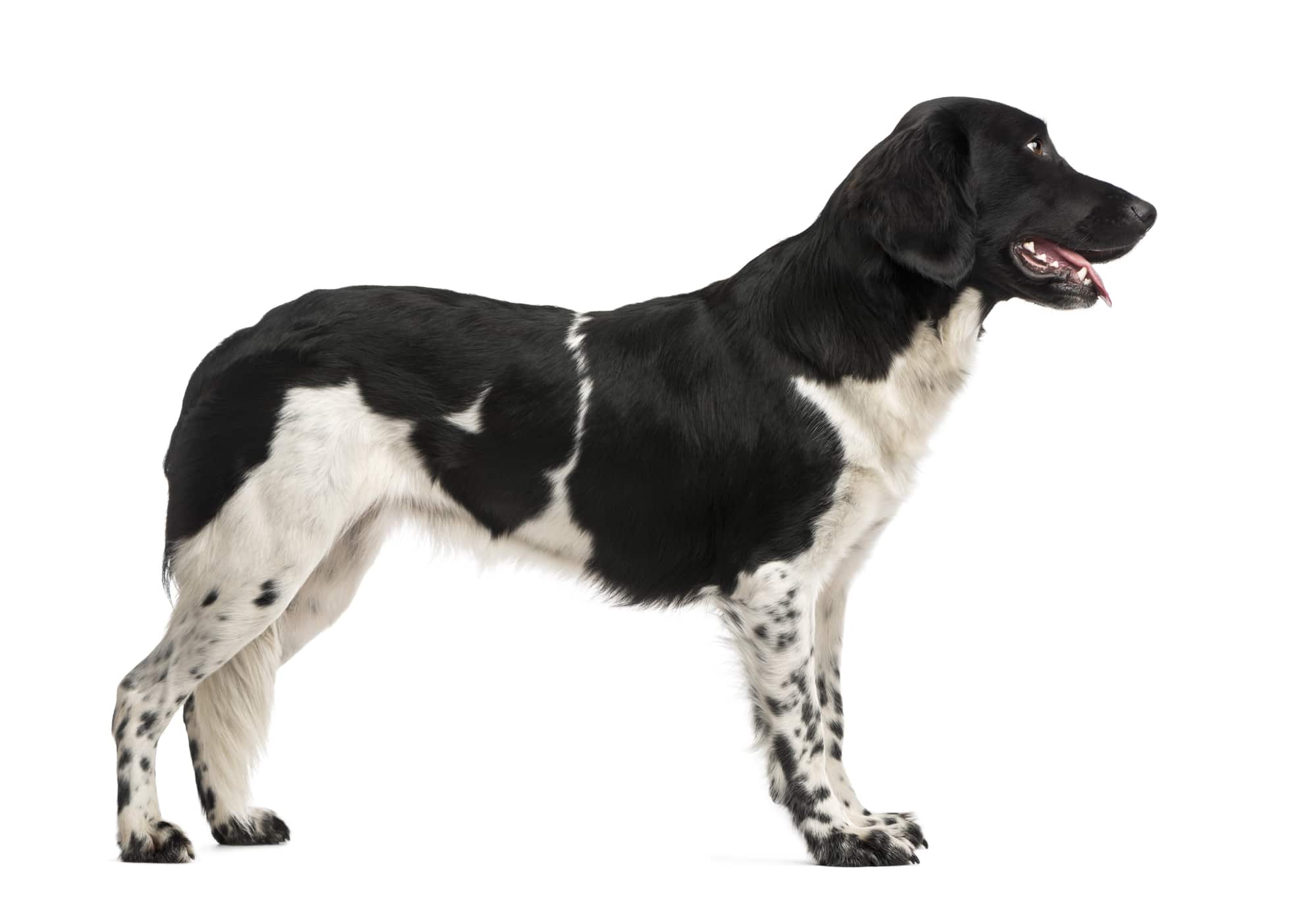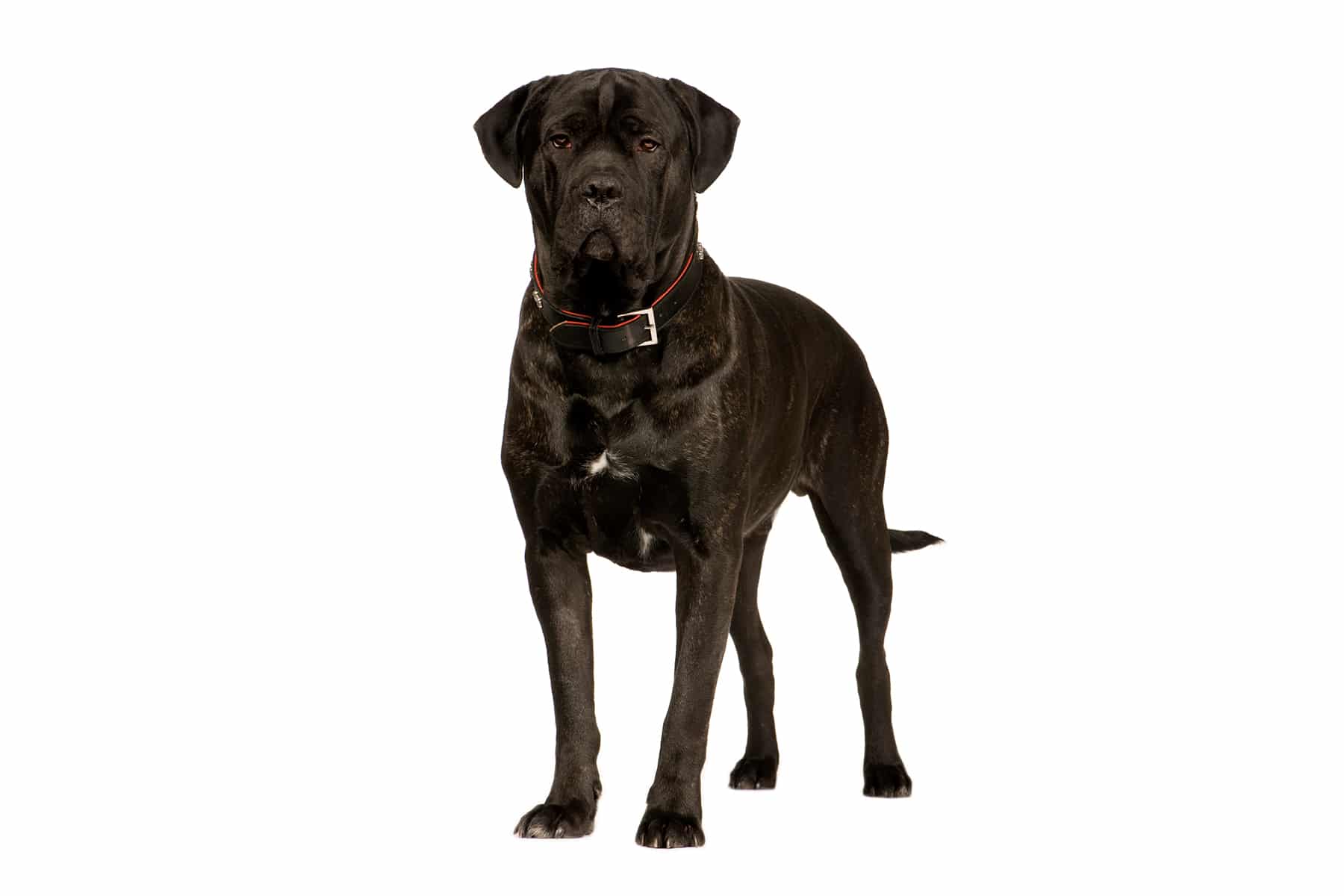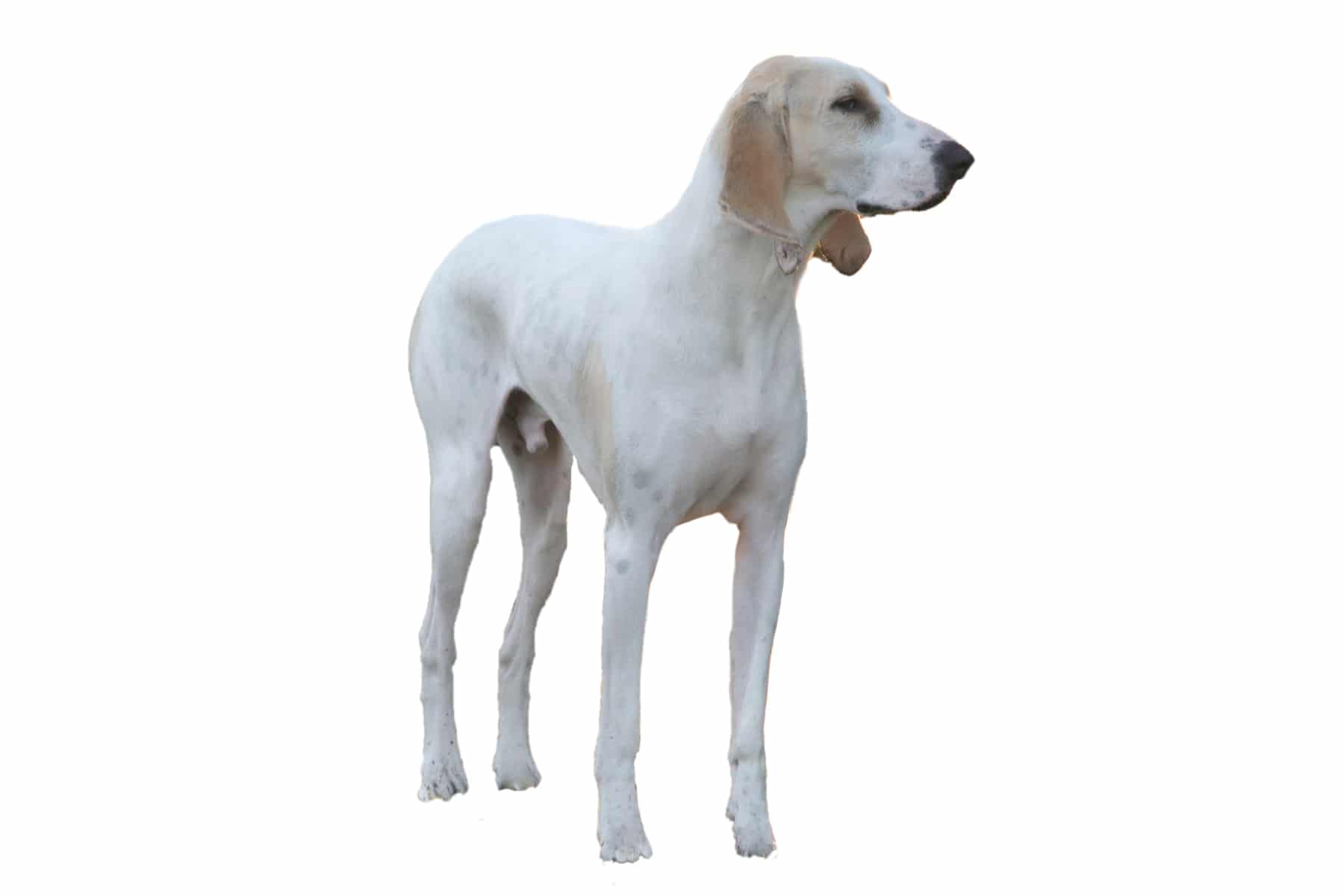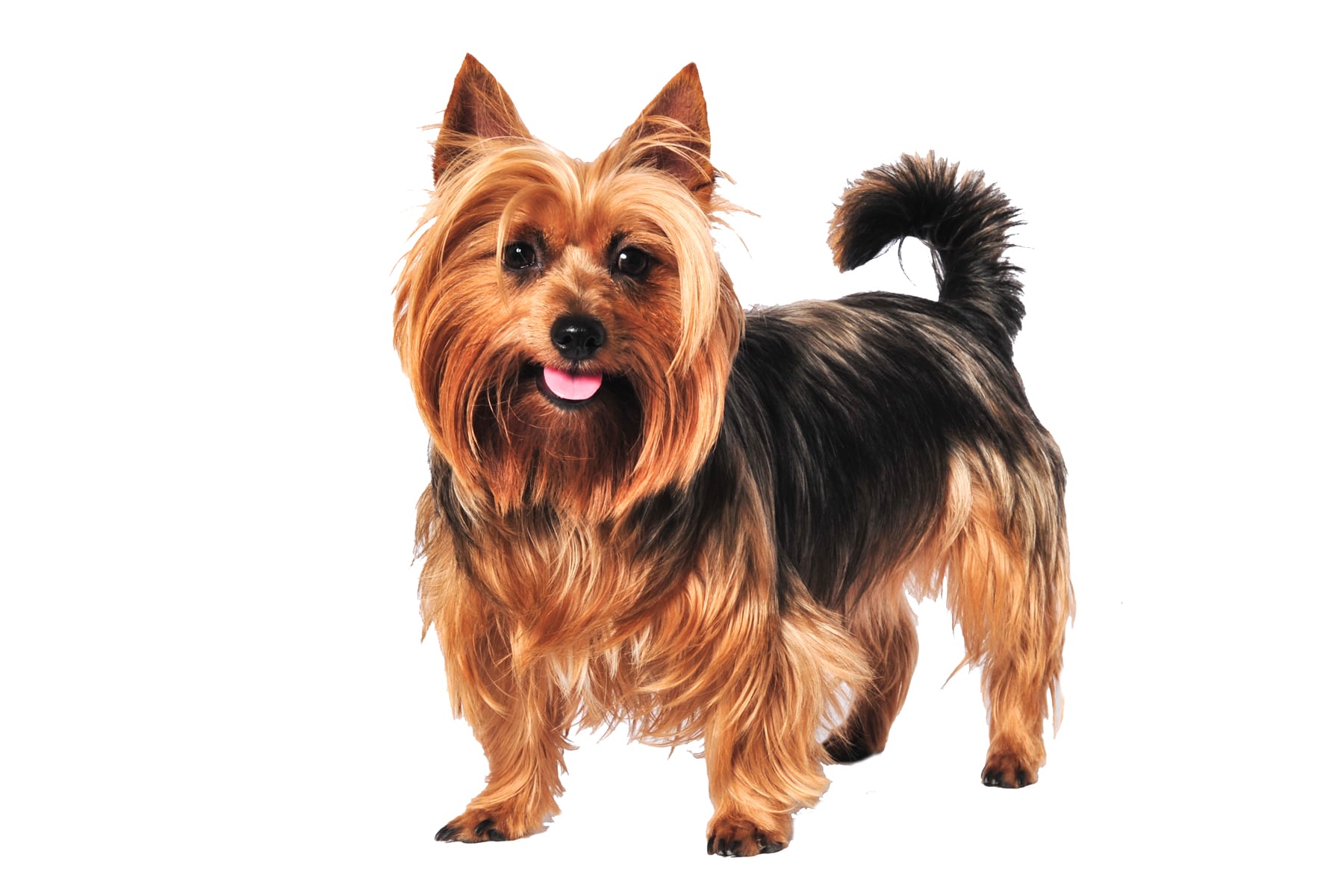German Wirehaired Pointer
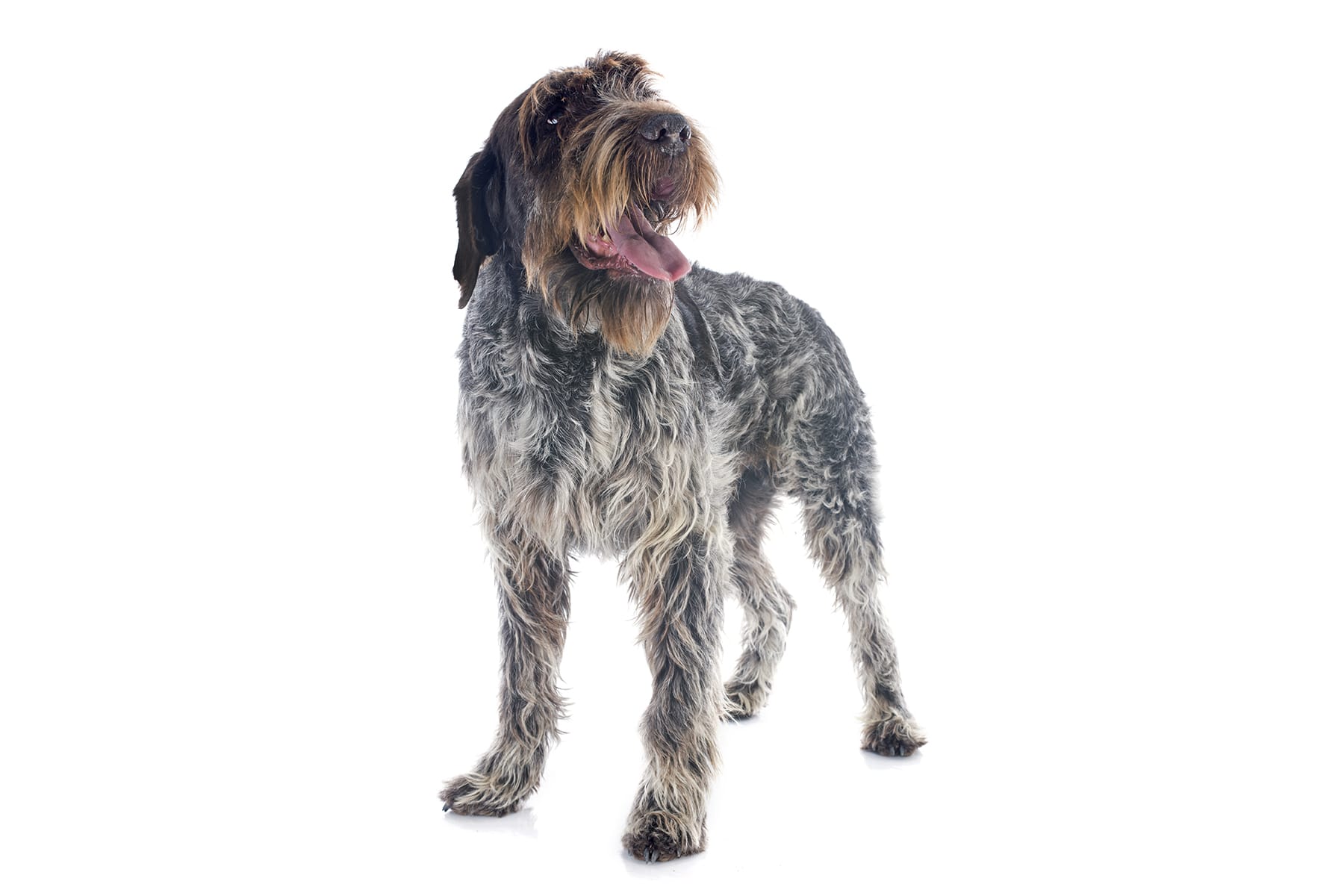

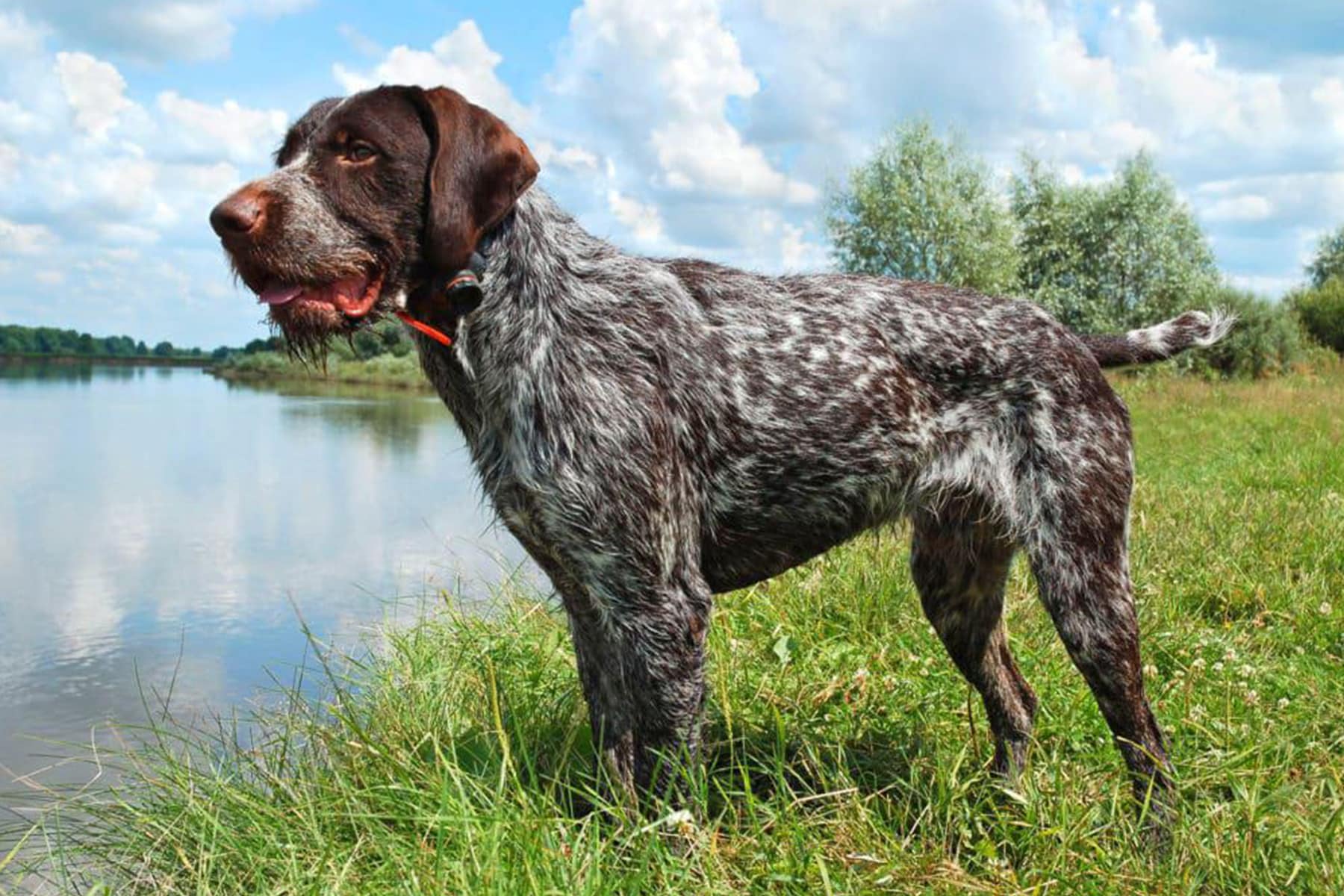
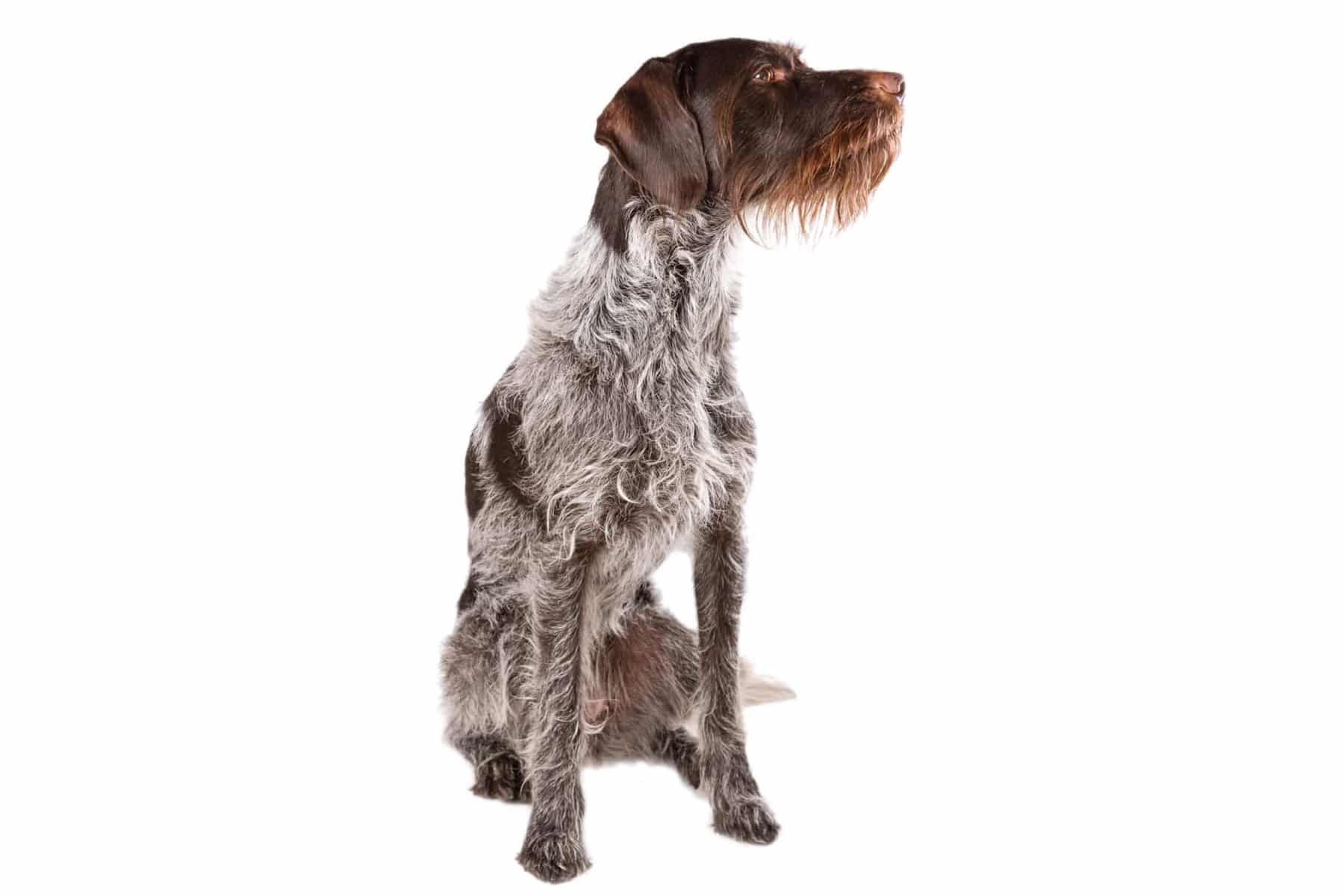
Temperament:
The German Wirehaired Pointer is one of the most popular hunting dog breeds. As a powerful all-rounder, it can be used in the field, forest and water. Despite its independent character, it is very family-oriented.
Characteristics
The Deutsch Drahthaar is a hunting dog breed of German origin. The breed is recognized by the FCI and assigned to Group 7, Pointing Dogs.
The hard coat protects the skin from environmental influences. The top coat is up to 4 cm long and lies on a dense, water-repellent undercoat.
The colors are black mold, brown mold and light mold.
The head is flat with distinct eyebrow arches.
The thick lips lie close to the head and have the same pigmentation as the coat.
The dark eyes have a lively, alert expression and are surrounded by pigmented eyelid rims.
The beard emphasizes the determined, energetic expression on his face.
The ribs of the broad and deep ribcage are strongly arched. The sternum protrudes far to the rear.
The muscular legs reach out wide, the posture is upright and straight. The movements are flowing and harmonious.
You should always be aware that the Deutsch Drahthaar is a hunting dog. It is used for single hunting in the field and in the water. In between, he guards his family's house and yard. He is first and foremost a working dog.
With the right amount of exercise, however, it can also be an excellent family dog that is good with children.
Even if the German Wirehair is not used for hunting, it should be trained regularly. Tracking work and maintrailing are just the thing for him.
Can you train a dog consistently and have empathy? Then it is a good companion dog for long walks. If you have built up a good, trusting bond with your dog, he is also very easy to lead off the lead.
The German Wirehaired Pointer has a lot of energy that it wants to live out. If this energy is directed in the right direction, it is a balanced dog that reacts neither shyly nor aggressively. Hecticness is completely alien to him.
He gets along well with other dogs.
Outside of working hours, the dog needs close family contact. The breed is not suitable for keeping in a kennel. It is an independent dog that thinks for itself and is easy to handle without showing signs of submissiveness.
Coat care:
Shedding:
Energy level:
Trainability:
Children suitable:
The right food
When choosing food, make sure that it contains high-quality ingredients, is balanced and meets your dog's requirements. Age, weight and activity play an important role here. You should follow the manufacturer's recommendations for the amount of food.
If your dog also hunts, it is important that he gets the nutrients that an active dog needs during this time.
Treats should only be fed in moderation. Natural, dried chews that support dental hygiene are best.
Puppies can be fed 4-6 times a day. The number of meals should be gradually reduced to 2 per day until the dog is fully grown. A rest period should be observed after meals to avoid stomach torsion.
Health & Care
The German Wirehair is very easy to care for. The water- and dirt-repellent coat needs to be brushed regularly. The undercoat does not tend to become matted, but should be thinned out regularly with a plucking brush.
Repeated bathing is not necessary. Dry dust and dirt can be brushed out of the coat.
Due to its hard-wearing coat, the breed is more suitable for keeping outdoors than indoors. In cold temperatures, a heatable, well-insulated kennel is required.
The hanging ears must be cleaned and checked regularly. Cleaning the external auditory canal with ear cleaning products reduces the risk of inflammation.
Sufficient exercise ensures that the claws wear well. If this is not the case, they must be trimmed regularly. Claws that are too long can cause pain and deformities.
After eating, the beard must be cleaned of food residues. If the remains are not removed, it can lead to inflammation of the skin around the chin and lips.
Eye care is particularly important for dogs with entropion (inwardly rolled eyelids). As the eyelashes grow inwards, they rub against the cornea of the eye. The conjunctiva becomes irritated and inflamed. Daily cleaning of the eyes with a mild eye cleaner for dogs can prevent inflammation. In extreme cases, surgical correction of the eyelids is necessary.
Suitable accessories
A comfortable place to lie down in a quiet spot is sufficient. Ideally, the place should be chosen so that the dog is not disturbed but can still keep a close eye on what is going on.
Good equipment for hunting with dogs is an important prerequisite for a successful hunt.
The hunting leash is used directly during the hunt. It must be easy to put on and take off. The material should have a neutral, inconspicuous color and not make any noise.
The loose lead allows the dog to explore the surroundings without moving away from you. When the "Apport" command is given, the lead can be released with a flick of the wrist.
The ideal hunting leash is made of leather and has no metal connections. It is light and compact. They can also be used as lead lines in everyday life.
A wide collar that does not restrict the dog's freedom of movement is required for welding work. A welding dog harness can also be used to relieve pressure on the cervical spine.
The dog should wear a protective vest when searching for game. The vest offers sufficient freedom of movement and evasion and protects your dog from serious injury. Bright signal colors and reflective stripes make the dog highly visible to the hunter.
To teach your dog to retrieve correctly, you will need various dummies. Once the basic training is complete, fur dummies and retrieving wings can be used.
If you want to give commands over a greater distance, you can use a dog whistle. The whistle must be insensitive to moisture and always have the same tone.
Cold protection vests protect the German Wirehair from hypothermia after the hunt. There are also cold protection vests with camouflage patterns for lying in camouflage.
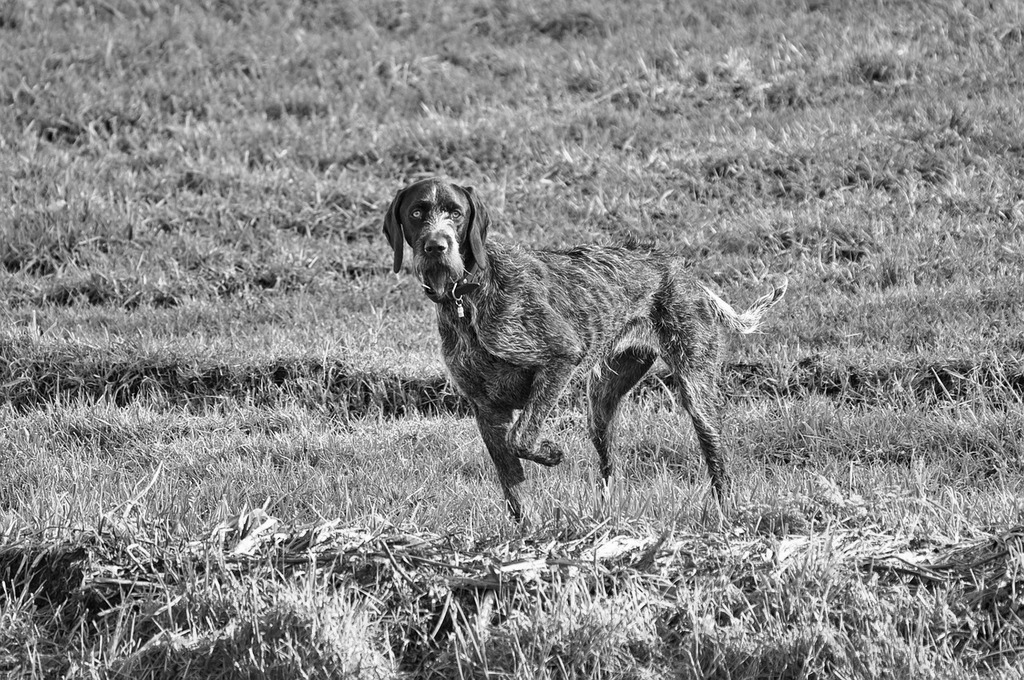
Origin & History
In the 19th century, the par force hunts of the nobility, which were carried out with packs of hounds, were replaced by individual hunts. Hunter and dog formed a single unit. Indicating the game and retrieving the shot prey from a greater distance were among the new tasks of the hunting dogs. Around 1870, modern, versatile hunting dogs such as the German Shorthaired Pointer and the Weimaraner were bred from the old quail and pointing dogs. The Deutsch Drahthaar was created by crossing the Griffon Porthals, Pudelpointer and Deutsch Stichelhaar with the Deutsch Kurzhaar.
Sigismund Freiherr von Zedlitz und Neukirch (Hegewald) played a key role in the development of the breed standard. The breeding goal was: "Through performance to type". The aim was to breed a powerful, versatile, wire-haired hunting dog.
The first breed standards for hunting dogs were established in 1879.
In 1897, all hunting dogs that had passed the strict tests were entered in a "Stammbuch der Deutschen Gebrauchshunde" (Studbook of German Working Dogs). From these dogs, the animals with the best characteristics were selected for breeding.
The Deutsch Drahthaar Association was founded in 1902 and still looks after the breed worldwide today.
Today, the breed is no longer modified so as not to weaken the desired characteristics.
The German Wirehaired Pointer is the only dog breed that was created without inbreeding.
The pointing dog is one of the most popular hunting dog breeds in the world today.
